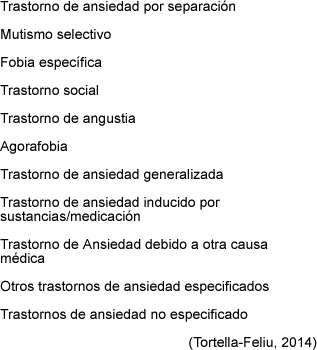10 Examples of Ancient Legends
Miscellanea / / September 14, 2021
Ancient legends
The ancient legends They are stories that convey stories with certain characteristics and that originated several centuries ago. These types of narratives have an uncertain origin, because they do not have an author and because they were transmitted from generation to generation and orally.
This type of legends they were used to explain certain phenomena or real events, but they always had fantastic elements, which could be interpreted as true.
Ancient legends show the worldview, that is, the way of interpreting the world of a certain community, because in many cases they arose with the purpose of transmitting beliefs, moral teachings or feelings of identity or membership.
Characteristics of ancient legends
Examples of ancient legends
- Legend of King Arthur
This medieval legend from England recounts the life and various exploits of King Arthur, although it is not known with certainty if this king really existed. One of the many legends that are related to the supposed king of Great Britain is that related to the sword in the rock. According to the story, this sword was buried halfway in a block of marble and whoever could remove it would become king of Great Britain. After many men tried, Arthur was the one who managed to pull the sword out of the marble and became king. This last fact is one of the many fantastic elements in Arthurian legends.
This legend appears in medieval texts, such as poetry, songs and epic tales, from English, French and Welsh literature. Arturo's story was taken up as material to produce different literary texts in the 19th and 20th centuries and films in the 20th century. These narratives have similar elements, but they also have great differences in terms of characters and feats.
- Legends in relation to El Cid
Rodrigo Díaz de Vivar, El Cid, was a man who existed in the 11th century and was a Spanish knight, who had a fundamental role in the conquest of Valencia. Although there are historical sources that narrate the events in which this gentleman participated, legends also began to emerge that transmitted orally and that they modified some real events, to adapt them to a Christian and Spanish worldview and to canonize the Cid as a hero. For example, when the battles in which the Cid participated are narrated, it is sought to make the character see as a man who had more courage, honor and strength than any other.
These legends appear in different literary texts, but the most important is the Song of mine Cid, one of the most famous works of Spanish literature.
- The Tristanian legend
This legend tells the love story between Tristan and Isolde, two characters who did not exist, but who supposedly lived in Ireland. The fantastic element in this story is that the two characters took a magic potion that made them fall in love and that would allow them to meet even after death.
Being a legend, it originated orally and that led to it having different versions in literature. This narrative is found in French, German, English and Norwegian medieval texts and was taken up again in the Renaissance, Romanticism and later movements to produce works in literature, theater, painting and music.
- Legend of the volcanoes
This is a Mexican legend that tells the story of the emergence of the Popocatepetl volcanoes and Iztaccíhuatl, which are located in the Valley of Mexico, that is, the events narrated take place in a real place.
This is a love legend that has two characters, Popocatépetl, a warrior, and Iztaccíhuatl, a princess, who were in love. The warrior went to a battle and supposedly died, causing the princess to die of sadness. But the warrior returned and, after seeing that his loved one had passed away, he took her body to what is now the Valley of Mexico and she was transformed into a volcano. Later he too became a volcano.
This legend is of Mexican origin, has many variations and appears in many later Mexican productions.
- Legend of Dietrich von Bern
The legends of Dietrich von Bern tell stories about a king who actually existed, Theodoric the Great, and who was king of the Ostrogoth Kingdom of Italy between 493 and 526. But in these stories there are fantastic elements, which are typical of legends, such as the fights that this character had with dragons and giants. These battles and other imaginary events have the function of making a common man, although very powerful, canonize himself as a hero.
These legends have many variations and appear in the Middle Ages in German and Saxon poetry and song.
- Legend of Siegfried
The legend of Siegfried belongs to a set of legends that appear in both the Germanic and Norse traditions. It is not known for sure, but it is believed that this character is inspired by real characters, such as the king of Austrasia who lived in the 6th century.
In this legend the life of Siegfried is narrated and fantastic elements appear, for example, it is said that Siegfried killed a dragon and then bathed in its blood to become immortal. The story of this character is of oral tradition, but it appears in different medieval literary texts, the two most important are The song of the Nibelungs and The saga of the volsungos.
- Legend of Hua Mulan
This is a Chinese legend that tells the story of Hua Mulan, a woman who dressed as a man to replace her father in the army and who was a great warrior.
Although in the written texts reference is made to different historical moments in which this story could have developed, there is no consensus as to when it supposedly occurred. The first written version of this legend is from the 6th century, but later other versions were made that differ from each other.
- Legend of Queen Alamelamma
This legend of Indian origin narrates the curse of Alamelamma that supposedly took place at the beginning of the 17th century in Srirangapatna. Alamelamma, wife of King Tirumalá, upon learning that her husband had been betrayed and murdered, she cast a curse on those responsible for the death of her husband, which resulted in a sandstorm that made the temples where the traitors were to disappear and that the usurper king could never have male descendants.
Although this legend contains fantastic elements, it is used to explain the disappearance of temples that really existed.
- Legend of Dazaifu Tenman-gū
Dazaifu Tenman-gū is a temple that is located in Japan and is built on the tomb of Michizane. Sugawara no Michizane was a man who actually existed in 9th century Japan and was later turned into a god.
The legend related to the temple and the character did not occur when he was alive, but after his death. The Fujiwara clan sent Michizane into exile, who later died and was buried on a road, where they built a shrine, which was transformed into the Dazaifu Tenman-gū temple.
According to legend, after his death, some members of this clan died, there were floods, plagues and droughts and it was believed that these events had been caused by the spirit of Michizane by way of revenge. Due to these events, the royal family decided that they would recognize Michizane's rank to calm her spirit and thus avoid other tragedies.
- Victory of Tivoli
Victoria was a woman who really existed in the 3rd century and lived in Rome. According to this narrative, Victoria was engaged to a Roman, Eugene. But she did not want to marry because she wanted to consecrate her life to God.
After wanting to break her engagement with Eugenio, he denounced her for being a Christian and Victoria was murdered. The fantastic event occurs after she is dead: Eugenio contracted leprosy and died six days later from this disease and because he was eaten by worms.
As with all legends, there are different versions of the legend. Today Victoria is considered a saint in the Catholic religion.
It can serve you:



